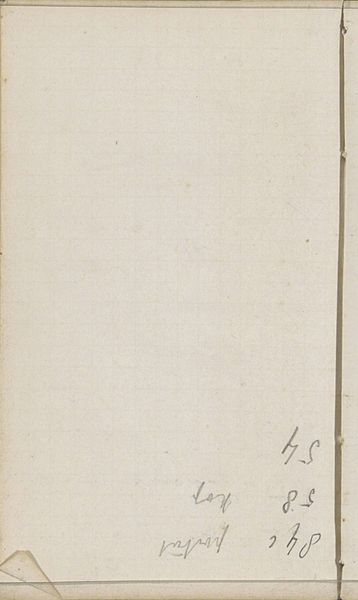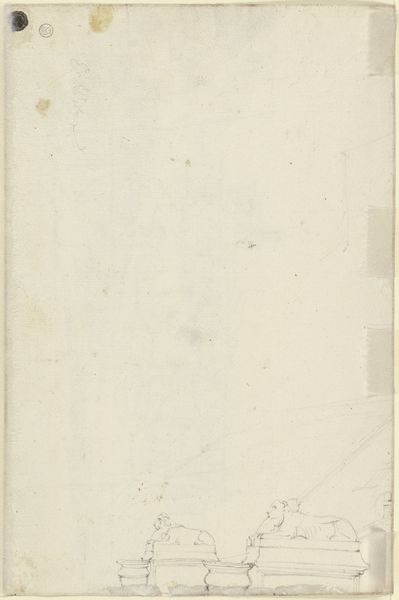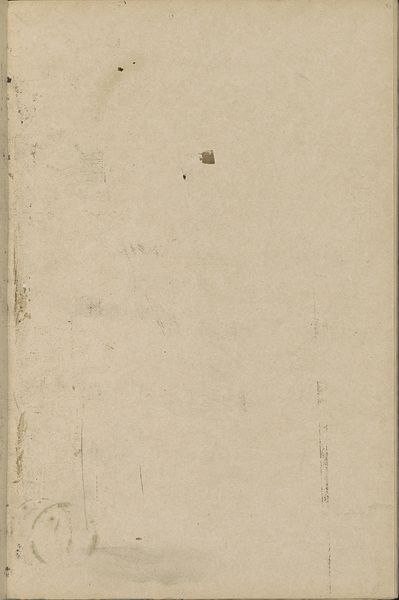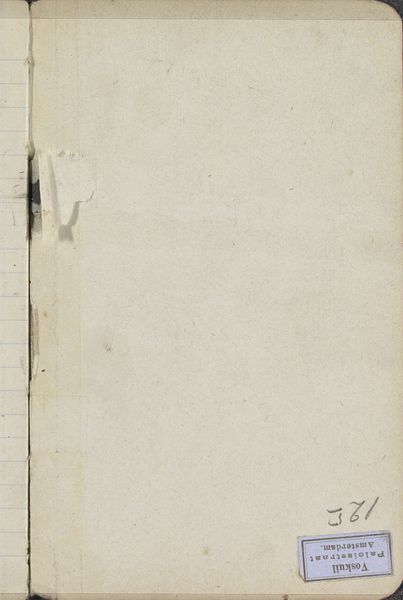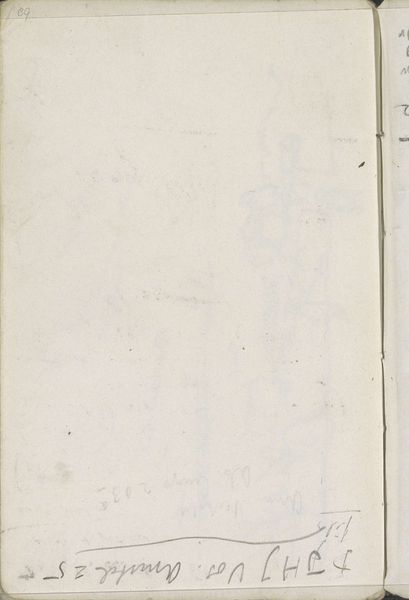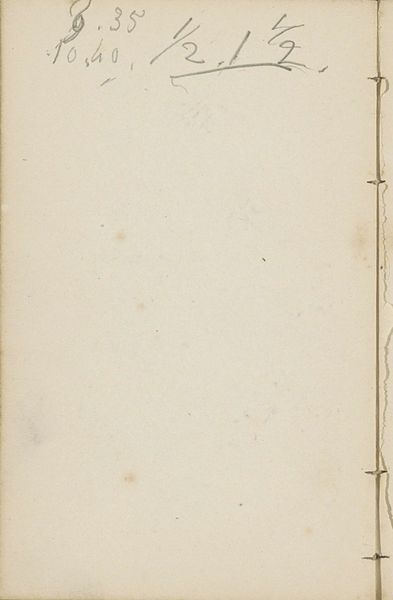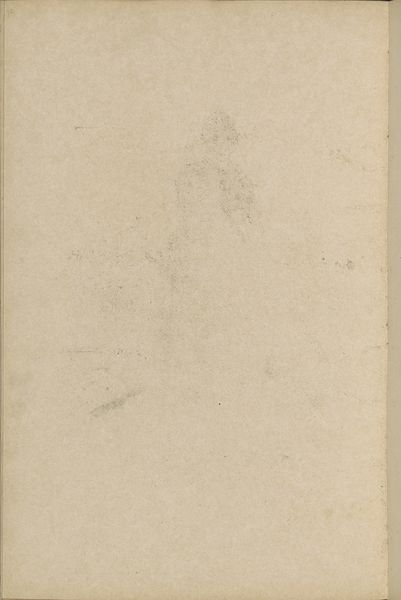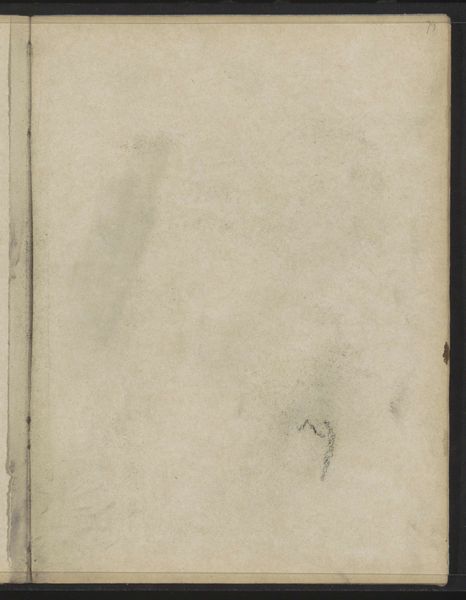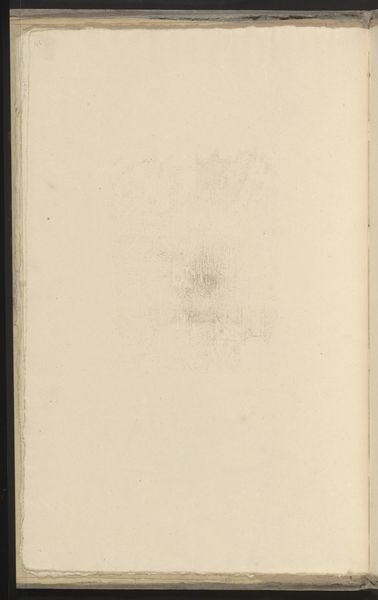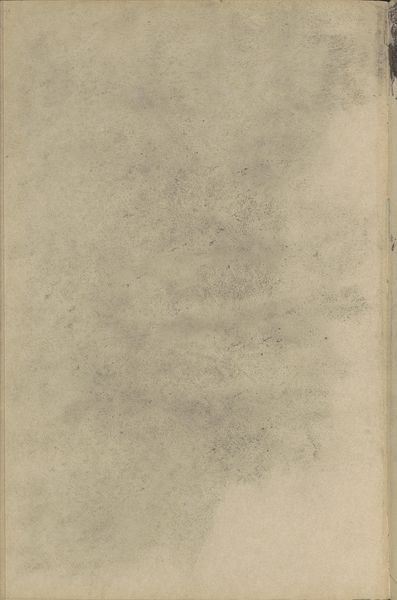
Copyright: Rijks Museum: Open Domain
Curator: Before us, we have "Notitie," a drawing rendered circa 1858 by Johannes Tavenraat, housed here at the Rijksmuseum. The piece is worked in pencil and watercolor on paper. Editor: My first impression is quietude, almost to the point of emptiness. It’s subtle and faded, yet the marks hint at a broader scene implied by the very delicate use of watercolours and pencil. Curator: It is definitely hushed, though let's consider the labour embedded within this seemingly unassuming image. Think of Tavenraat carefully grinding the pigments, preparing his paper, and the very physical act of repeatedly applying pencil strokes. Editor: I see what you mean; there’s also the suggestion of a faded memory here, or perhaps the artist’s intention was to capture the ephemerality of a moment. Do the symbols of Dutch landscape at this period inform this rendering, suggesting themes of loss or perhaps a national reflection in a rapidly industrialising era? Curator: Potentially! Remember, however, that paper itself, its texture and absorbency, directed the creation as much as any symbolic yearning or conceptual design. Moreover, who commissioned or consumed these landscapes informs our comprehension of it too. Was it meant to decorate a wealthy merchant's home, tacitly demonstrating ownership and control of the Dutch landscape? Editor: That's an intriguing approach. I keep returning to what this seemingly vacant rendering might have held for viewers then and what its hazy quality evokes now. It prompts one to meditate on landscape, place and what they stood for then in terms of belonging and heritage. Curator: Indeed. The interaction of process, materials, labour and consumption patterns creates not merely aesthetic representation, but cultural value as well. The cost and availability of pencils, paper, and pigments dictated to some extent artistic output within artistic studios. These socio-economic contexts frame our encounters today with historical creations such as “Notitie”. Editor: Looking at “Notitie” through those dual lenses has enhanced my appreciation for it. I see a simple study with an underlying symbolism now intensified by reflecting on its cultural history and modes of making. Curator: Agreed. Considering its creation opens up the discussion for interpreting what’s rendered upon the artwork.
Comments
No comments
Be the first to comment and join the conversation on the ultimate creative platform.
